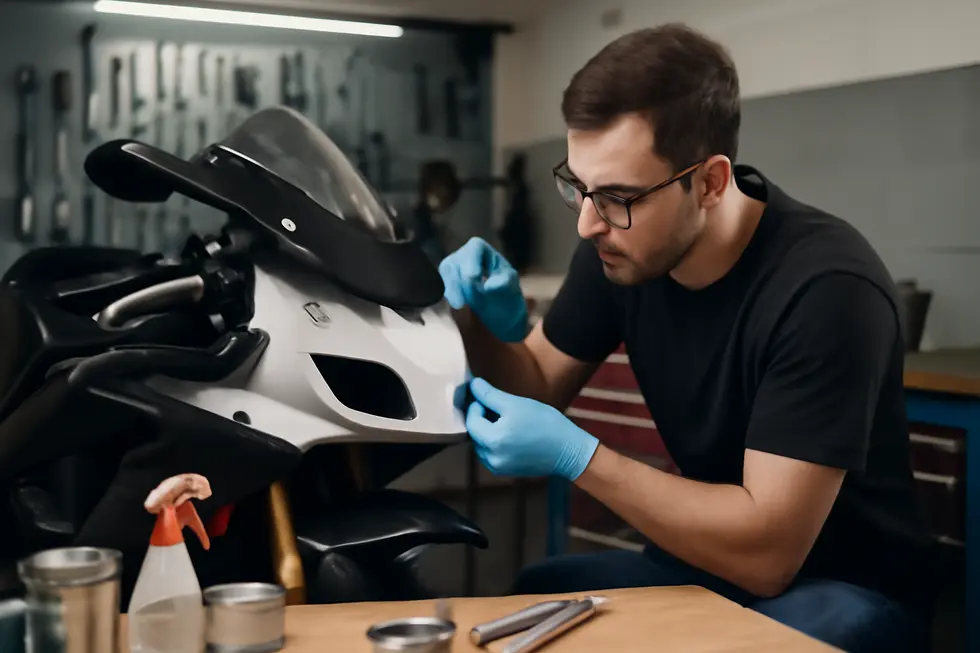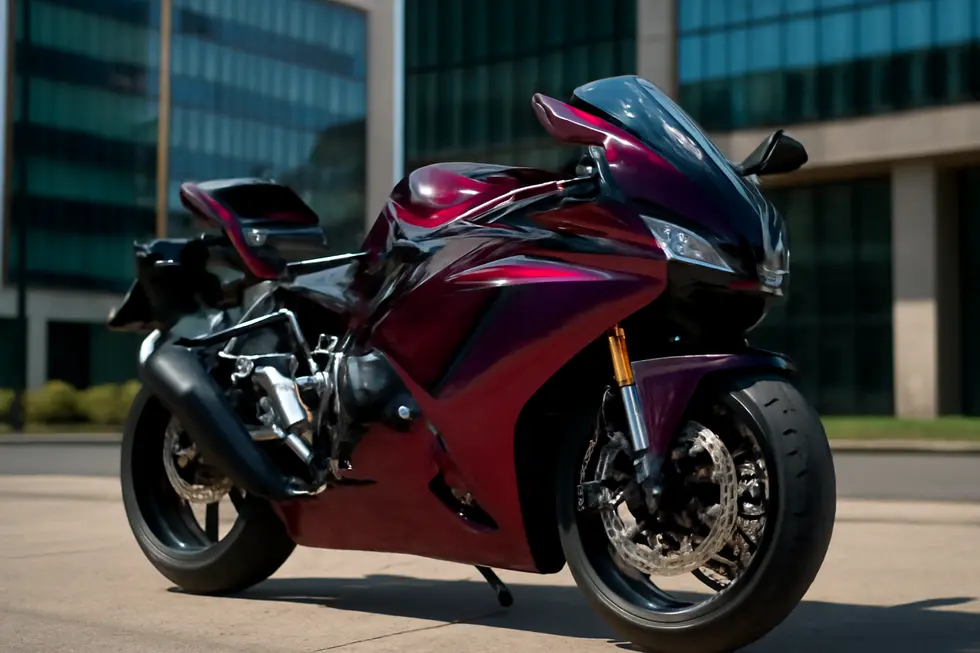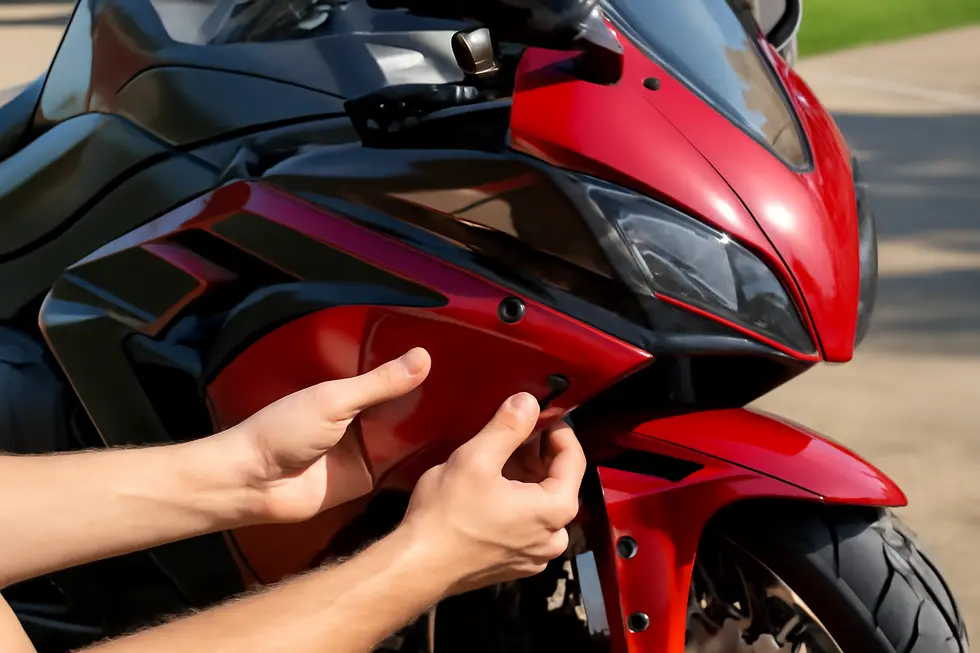Optimizing Motorcycle Performance: The Strategic Role of Fairings in Business
August 17, 2025 | by summitfairings
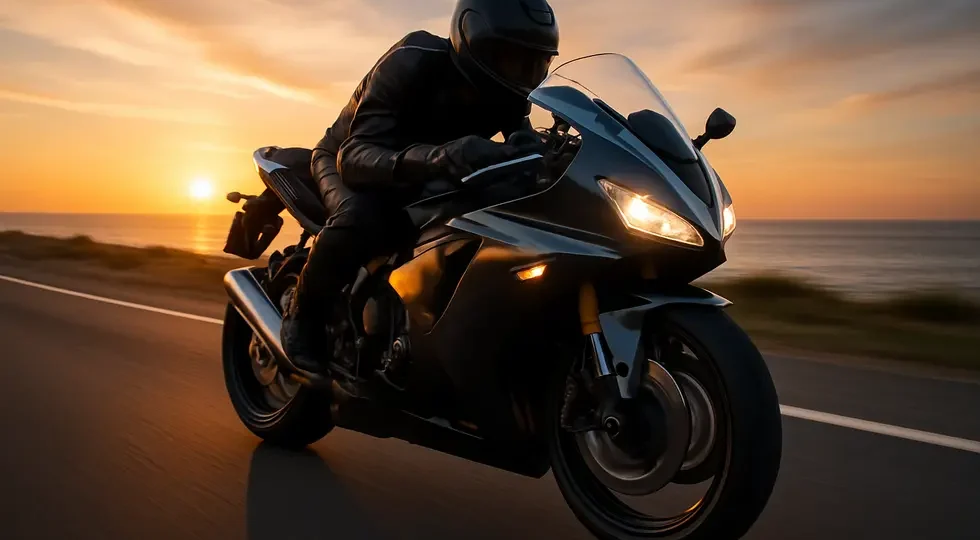
Introduction
Motorcycle fairings are more than just stylistic add-ons; they represent a critical element in the enhancement of speed, stability, and rider comfort. For business owners in the motorcycle industry, understanding the intricate balance between aerodynamic design, functional application, and economic implications of fairings offers a pathway to optimizing product offerings and customer satisfaction. This article delves into the aerodynamic principles that define motorcycle fairings, explores the variety of fairing types tailored for distinct uses, and outlines essential maintenance and repair considerations. Each chapter builds on the last to present a comprehensive perspective, enabling retailers, distributors, and aftermarket specialists to make informed decisions that capitalize on both performance and profitability.
Tables of Contents
Chapter 1: Aerodynamic Design and Functional Role of Fairing of Motorcycle
- Streamlined Power: Enhancing Speed and Efficiency through Motorcycle Fairing Aerodynamics
- Harnessing Downforce for Enhanced Handling Stability through Motorcycle Fairing Aerodynamics
- Innovative Cooling Integration in Aerodynamic Motorcycle Fairing Design
- Seamless Rider Protection and Enhanced Comfort through Aerodynamic Fairing Design
- Advanced Materials and Structural Integration Shaping Motorcycle Fairings’ Aerodynamics and Durability
Chapter 2: Diverse Motorcycle Fairings and Their Multifaceted Roles
- Exploring Varieties of Motorcycle Fairings: Balancing Aerodynamics, Protection, and Rider Comfort
- Innovative Fairing Designs: Enhancing Motorcycle Stability and Aerodynamics for Performance and Safety
- Optimizing Rider Comfort and Weather Protection through Motorcycle Fairing Variations
- Balancing Aerodynamics and Engine Cooling: How Fairing Designs Enhance Mechanical Efficiency
- The Art of Customization and Cultural Influence in Motorcycle Fairings
Chapter 3: Maintenance, Repair Considerations, and Economic Impact of Fairing of Motorcycle
- Effective Care and Upkeep Strategies for Motorcycle Fairings: Balancing Durability, Performance, and Value
- Effective Repair Strategies and Cost Implications for Motorcycle Fairings
- Balancing Cost and Performance: The Economic Impact of Motorcycle Fairing Maintenance and Replacement
- How Material Properties Shape Maintenance and Repair Costs in Motorcycle Fairings
- How Fairing Upkeep Enhances Performance and Minimizes Long-Term Repair Costs
Chapter 1: Aerodynamic Design and Functional Role of Fairing of Motorcycle
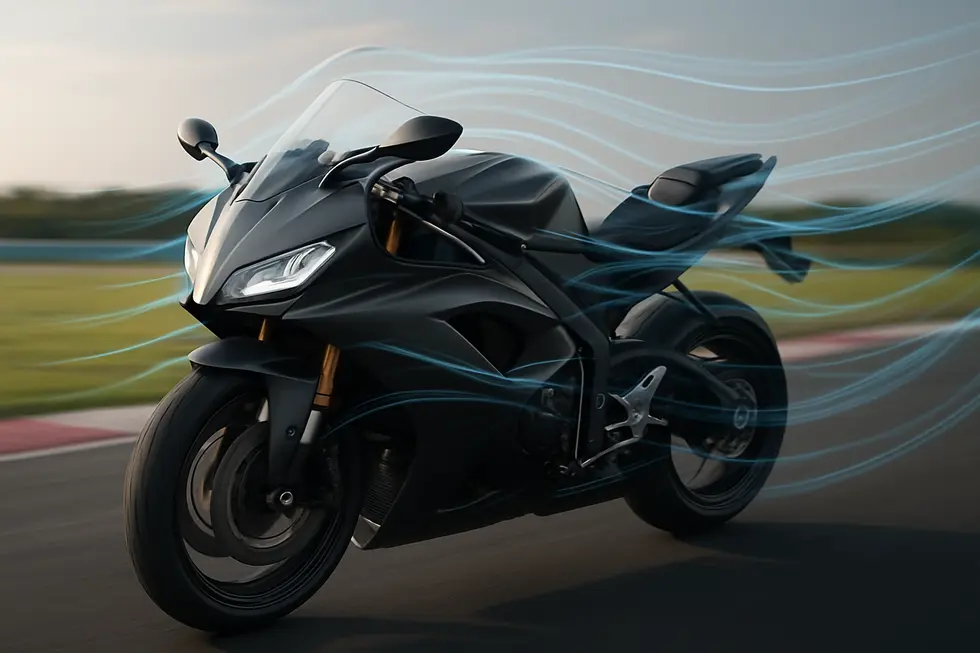
1. Streamlined Power: Enhancing Speed and Efficiency through Motorcycle Fairing Aerodynamics
The aerodynamic design of a motorcycle fairing plays a pivotal role in maximizing speed and efficiency by expertly reducing air resistance. By enveloping much of the motorcycle’s front and sides, full fairings create a smooth, streamlined shape that helps air flow seamlessly around both the bike and rider, significantly minimizing drag. This reduction in aerodynamic drag means the engine expends less power to overcome wind resistance, allowing the motorcycle to achieve higher speeds more effortlessly and maintain those speeds with improved fuel efficiency.
Beyond drag reduction, fairings contribute to rider comfort by deflecting wind away from critical points like the head and torso. This wind protection decreases rider fatigue and promotes an optimal riding posture, which in itself supports aerodynamic advantage. Moreover, the design of fairings influences handling dynamics; they generate subtle downforce that assists in maintaining tire traction and stability during fast rides, particularly in straight-line acceleration.
Fairings vary in coverage and design to balance aerodynamic gains with maneuverability. Full fairings offer superior drag reduction but can restrict some handling due to limited fork or handlebar movement. Alternatives like half or quarter fairings reduce drag moderately while enhancing agility. In competitive racing scenarios, manufacturers utilize lightweight materials such as carbon fiber or fiberglass to craft custom fairings tailored precisely to each motorcycle’s geometry. These specialized designs ensure that aerodynamic benefits are maximized without compromising weight or control.
Modern sportbikes further refine this concept with sleeker front profiles and smaller aerodynamic ducts, advancing airflow management for optimal top speeds. Each element—from coverage extent to material choice and contour—is meticulously engineered to amplify aerodynamic efficiency, directly enhancing both speed and rider performance.
For those interested in exploring options and designs tailored to improving aerodynamic efficiency, discover unmatched choices in motorcycle fairings at Summit Fairings offers a comprehensive resource.
2. Harnessing Downforce for Enhanced Handling Stability through Motorcycle Fairing Aerodynamics
Motorcycle fairings play an essential role beyond mere aesthetics; their aerodynamic design actively generates downforce that significantly enhances handling stability, particularly at high speeds. Downforce is the vertical force pressing the motorcycle onto the road surface, increasing tire grip and helping riders maintain control during acceleration, cornering, and in the presence of crosswinds. This increased vertical load reduces the risk of lift and instability, improving both performance and safety.
Key innovations in fairing design integrate aerodynamic features such as winglets and spoilers to manipulate airflow efficiently. For example, modern sport motorcycles employ integrated winglets on the front fairing, which produce downforce by directing air pressure downward onto the front wheel. This not only bolsters grip but also stabilizes the bike during rapid directional changes and heavy acceleration. Similarly, some advanced fairings use vortex-generating elements that smooth airflow around critical areas to reduce turbulence while adding targeted downforce.
The shape and placement of these aerodynamic surfaces are carefully engineered to balance downforce generation without excessive drag penalties. Some designs even explore dynamic winglets that maintain optimal orientation relative to gravity when the motorcycle leans in corners. This steady downforce supports cornering performance by preventing lateral forces that could destabilize the motorcycle. Aftermarket solutions inspired by professional racing technology replicate these principles, enhancing vertical pressure on tires to boost traction without compromising aerodynamics.
Ultimately, the strategic use of aerodynamic downforce via motorcycle fairings allows riders to confidently push performance limits. By improving tire-road contact and resisting destabilizing forces such as lift or crosswinds, fairings contribute directly to safer, more agile handling dynamics. For those interested in further exploring motorcycle fairing options designed for both style and functionality, the best motorcycle fairings available offer a wide range of aerodynamic solutions. Additional technical details on cutting-edge designs can be studied in analyses of integrated winglet systems used on high-performance sport motorcycles.
3. Innovative Cooling Integration in Aerodynamic Motorcycle Fairing Design
Motorcycle fairings perform a complex dual function, blending aerodynamic efficiency with effective cooling management. Beyond smoothing airflow to reduce drag and enhance stability, fairings are intricately engineered to channel air precisely toward critical heat-generating components like radiators, oil coolers, and engine parts. This delicate balance preserves both high-speed performance and mechanical reliability.
Strategic airflow paths are embedded within fairing designs to optimize heat dissipation without compromising aerodynamic gains. Integrated winglets, vents, and air intakes serve multiple purposes: providing downforce for improved handling while directing cooler air into liquid-cooling systems and facilitating the extraction of hot air from engine bays. Concealed outlets, often positioned within side panels, enable efficient hot air exhaust, mitigating thermal buildup during extended rides or aggressive acceleration.
Advances in computational fluid dynamics allow designers to refine these ducting systems with remarkable precision. By simulating airflow patterns, engineers optimize the placement and sizing of intakes and exhausts, achieving better temperature control with minimal impact on the motorcycle’s sleek profile. This synergy ensures that rider comfort is maintained through minimized buffeting and subtle wind redirection, while the engine operates within safe thermal limits.
Given motorcycles’ inherently limited frontal area, this integrated approach is essential. Efficient cooling through aerodynamic fairing design upholds performance reliability, particularly in demanding conditions such as high-speed track riding or long-distance touring. The outcome is a refined harmony where every contour not only cuts through air but also breathes life into the engine’s critical cooling processes.
For those exploring advanced fairing options, discovering affordable motorcycle fairings that emphasize both aerodynamic and cooling innovations offers a path to optimized ride dynamics and comfort.
4. Seamless Rider Protection and Enhanced Comfort through Aerodynamic Fairing Design
Motorcycle fairings play a vital role beyond mere aerodynamic refinement; they serve as essential shields that enhance rider protection and comfort through careful aerodynamic shaping. By strategically directing airflow, fairings reduce drag while smoothing wind currents around both the motorcycle and rider. This creates a calmer air envelope that significantly diminishes wind blast on sensitive areas like the hands, shoulders, and torso. Such wind deflection lowers rider fatigue by lessening constant pressure and resistance, thus enabling more precise control and endurance, especially during prolonged or high-speed rides.
The aerodynamic contours are crafted to minimize turbulence, which not only improves stability and handling but also serves as a barrier against environmental factors such as rain, dust, and debris. Full fairings envelop critical motorcycle components and the rider’s position, generating a protective cocoon that guards against weather and road hazards. Ergonomic design complements aerodynamics by integrating reshaped seats and repositioned footpegs, further enhancing riding posture and comfort.
Functionally, these fairings also channel airflow toward vital mechanical parts, improving cooling efficiency without compromising aerodynamic smoothness. Aerodynamic appendages embedded within the fairing generate downforce, which stabilizes the front wheel at speed, reduces lifting, and enhances braking reliability. Structurally, robust mounting systems maintain fairing integrity under vibration and wind load, ensuring consistent performance and preventing distracting movement or noise that might affect rider focus.
By harmonizing aerodynamic efficiency with protective and comfort functions, motorcycle fairings elevate the riding experience—boosting speed, safety, and endurance. This integrated approach underscores why fairings remain indispensable in both competitive and everyday motorcycle design.
For further insights on enhancing motorcycle performance through aerodynamic components, explore comprehensive resources at Summit Fairings’ blog.
5. Advanced Materials and Structural Integration Shaping Motorcycle Fairings’ Aerodynamics and Durability
Motorcycle fairings are a feat of engineering where material science and structural design converge to optimize aerodynamics, durability, and rider protection. The choice of materials directly influences weight, strength, and resilience, all pivotal to enhancing speed and handling while maintaining safety. Among these, carbon fiber composites stand out for their exceptional strength-to-weight ratio, corrosion resistance, and thermal stability, withstanding temperatures up to 250°C. Their lightweight nature reduces overall motorcycle mass by 30-40% compared to fiberglass or aluminum, boosting acceleration, fuel efficiency, and maneuverability. In contrast, ABS plastic serves as a versatile, cost-effective alternative widely used in OEM and aftermarket fairings. It balances durability and impact resistance with ease of molding, enabling seamless fitment and customizable finishes, including faux carbon fiber aesthetics.
Structural considerations also drive fairing design. The smooth, contoured surfaces are engineered to reduce aerodynamic drag by approximately 15-20%, incorporating features such as winglets or spoilers to enhance stability at high speeds. These shapes must withstand constant vibrations, wind pressures, and minor impacts typically encountered during riding. Carbon fiber’s stiffness ensures structural integrity without flexing, while ABS contributes flexibility to absorb shocks from debris or low-speed collisions. Moreover, the fairing integrates tightly with the motorcycle’s frame and suspension systems—often crafted from aluminum alloys or steel tubing—to maintain alignment and support dynamic forces. For example, sophisticated twin-spar aluminum frames blend cast and extruded sections to optimize lightweight strength, complementing the fairing’s aerodynamic role.
Ultimately, the synergy between advanced materials and refined structural design delivers fairings that not only minimize drag but also reinforce durability and rider comfort. This balance is essential to modern motorcycle engineering and can be explored further through expert sources such as the detailed Summit Fairings blog.
For deeper insight into innovative frame and suspension design complementing fairings, the 2025 Suzuki Hayabusa exemplifies integration of aluminum twin-spar frames tailored for high-performance aerodynamics. This fusion of materials and structure is critical to achieving the comprehensive functional role fairings must fulfill.
Chapter 2: Diverse Motorcycle Fairings and Their Multifaceted Roles
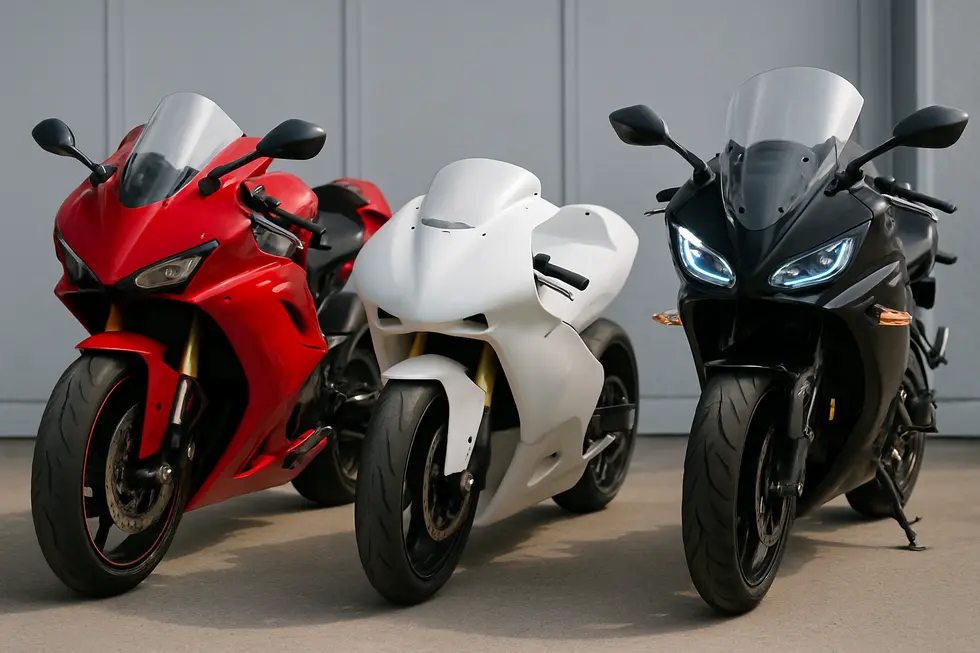
1. Exploring Varieties of Motorcycle Fairings: Balancing Aerodynamics, Protection, and Rider Comfort
Motorcycle fairings serve as essential aerodynamic components that streamline airflow and shield riders and mechanical parts from external elements. These panels vary widely in design and coverage, each type crafted to meet specific functional demands. A full fairing envelops the front and sides of the bike, commonly found on sport and touring motorcycles. Its extensive coverage not only reduces drag significantly but also provides excellent wind protection, minimizing rider fatigue on long rides by deflecting wind blast. Additionally, full fairings safeguard key engine components against debris and weather.
In contrast, half fairings cover just the upper portion, typically the windscreen and headlight. This offers moderate wind deflection while allowing easier access to the engine and frame for maintenance—a popular choice for sport-touring riders seeking a practical compromise. More minimalistic is the quarter fairing, which often consists of a small windscreen or cowl around the headlight area. While offering limited wind protection, quarter fairings improve the motorcycle’s aesthetics and slightly enhance aerodynamics.
Certain specialized fairings like the tank fairing streamline the profile around the fuel tank, enhancing airflow continuity. Meanwhile, the lower fairing or belly pan, positioned beneath the engine, contributes to aerodynamic efficiency and shields vital components from road debris. Adventure motorcycles sometimes feature a distinctive beak fairing, a narrow, protruding front design that channels airflow to optimize cooling and reduce turbulence.
Beyond improving aerodynamic performance, fairings play a critical role in rider comfort and safety. Touring fairings, often made from durable, vibration-resistant materials, effectively reduce wind blast, lowering fatigue on extended journeys. Integrated vents and ducts in some fairings enhance engine cooling by directing air precisely where needed, crucial for managing heat during strenuous riding conditions.
Furthermore, fairings contribute significantly to a motorcycle’s visual identity, combining form and function to reinforce brand aesthetics. Their diverse designs reflect the varied riding styles and environments they serve, from high-speed racing to rugged adventure touring. For more detailed insights into available options, visit Explore the Best Motorcycle Fairings at Summit Fairings.
2. Innovative Fairing Designs: Enhancing Motorcycle Stability and Aerodynamics for Performance and Safety
Motorcycle fairings are engineered with distinct shapes and features that optimize airflow, enhance stability, and improve rider protection across diverse riding scenarios. Among the most prevalent are full, half, and quarter fairings, each offering a unique balance between aerodynamic efficiency and practicality. Full fairings encase large portions of the motorcycle—from front to sides—streamlining air movement to reduce drag substantially. This design minimizes turbulence and creates smoother airflow around both the rider and mechanical components, boosting top-speed capability and stability, especially in high-performance sport and racing motorcycles.
Conversely, half and quarter fairings provide partial coverage, targeting core airflow disruption while facilitating easier access to engine and control systems. They emphasize rider comfort and practical maintenance without sacrificing all aerodynamic advantages. The evolution of fairings now incorporates aero-enhancing appendages such as winglets or spoilers, which generate measurable downforce on the front wheel. This vertical load counters lift forces common at high speeds, reducing front wheel “floating” during acceleration, braking, and cornering maneuvers. Such downforce improves grip and confidence, allowing riders to maintain throttle application through corners with reduced reliance on electronic aids.
Modern sport motorcycles integrate these advanced design elements to create stable, efficient airflow regimes that also enhance cooling efficiency and rider comfort. Touring bikes apply extensive bodywork primarily to shield riders from wind and weather over long distances, focusing less on aggressive downforce but still benefiting from streamlined forms to reduce fatigue.
The strategic tailoring of fairings—from comprehensive full-body shells to aerodynamic winglets—illustrates their critical role in not only maximizing speed but significantly elevating handling stability and safety. For enthusiasts seeking tailored solutions, exploring specialized suppliers offers insight into customizable fairings that blend functionality with personal style, improving airflow management suited to specific riding preferences. For more detailed options, you can explore the best motorcycle fairings here.
3. Optimizing Rider Comfort and Weather Protection through Motorcycle Fairing Variations
Motorcycle fairings play a pivotal role not only in aerodynamics but also in shielding riders from harsh weather and enhancing overall comfort during rides. Different fairing designs offer tailored solutions to meet diverse rider needs, balancing aerodynamic efficiency with practical protection.
The full fairing, often seen on sport and touring motorcycles, envelops the front and sides of the bike to provide comprehensive wind and weather defense. This extensive coverage deflects harsh winds, rain, and road debris away from the rider, minimizing fatigue caused by sustained exposure and turbulent airflow. It also helps maintain rider warmth in cold or wet conditions by reducing direct wind contact.
Half fairings cover the upper front area above the headlight, delivering moderate protection without the weight and bulk of full fairings. This design suits riders who prefer a lighter, more open feel but still want relief from wind blast during longer trips. Similarly, quarter fairings offer minimal coverage, focusing mainly around the headlight, which slightly improves aerodynamics but provides limited weather defense. Riders of cruisers or those prioritizing style often favor quarter fairings for their subtle protection and aesthetic appeal.
Touring-specific fairings, such as the iconic batwing style, offer the most generous protection designed for long-distance journeys. Besides deflecting wind and elements, these fairings frequently house integrated features like storage compartments and audio systems, making extended rides more comfortable and practical.
Adjustable vents in many fairing types allow riders to fine-tune airflow, helping to manage interior temperatures and prevent overheating. Moreover, accessory kits can enhance fairings by filling gaps to reduce buffeting around the legs, further improving ride comfort on demanding routes.
Ultimately, the choice of fairing hinges on the rider’s priorities—whether maximizing weather protection and comfort or maintaining a lightweight, agile experience. For those interested in a broad selection that balances style with function, a trusted source offers extensive options tailored to various motorcycle styles and needs. This adaptability underscores the fairing’s essential role in elevating both rider endurance and safety across conditions.
4. Balancing Aerodynamics and Engine Cooling: How Fairing Designs Enhance Mechanical Efficiency
Motorcycle fairings do more than just sculpt airflow; they play a pivotal role in balancing aerodynamic performance with essential engine cooling and mechanical efficiency. Among the various fairing types, full fairings stand out by enveloping the motorcycle’s front and sides, creating a streamlined profile that reduces drag and channels air precisely towards the engine and radiator. This careful management of airflow not only maximizes speed and stability but also ensures the engine maintains optimal temperatures, preventing performance loss from overheating. The integration of vents and ducts within these fairings supports this delicate balance, allowing cool air to reach mechanical components while avoiding disruption of aerodynamic flow.
Half and quarter fairings offer a more modest compromise, providing some aerodynamic benefits and cooling enhancement with less coverage. While they reduce wind resistance around the rider’s upper body and frontline components, the reduced surface area means airflow for engine cooling is less controlled than full fairings. Touring fairings, often larger and designed for rider comfort on long journeys, incorporate specialized vents to direct cooling air efficiently. These designs strive to maintain engine temperatures while minimizing harsh wind impact on the rider, demonstrating how fairing configurations adapt to different use cases.
In the arena of high-performance motorcycles, small aerodynamic additions like winglets or spoilers refine airflow further. These elements generate downforce for improved traction and subtly guide air to critical engine parts, enhancing cooling without adding significant drag. By reducing aerodynamic turbulence and optimizing cooling airflow, fairings reduce the engine’s workload, improving fuel economy and mechanical efficiency. This efficiency boost not only extends engine life but also contributes to rider confidence through enhanced stability and responsiveness.
For riders and builders interested in fine-tuning these aerodynamic and cooling advantages, customized fairing solutions provide options tailored to specific motorcycle models and performance goals. Exploring specialized fairing designs that emphasize both form and function can reveal significant improvements in ride quality and engine durability. For more on choosing the right configurations, visit Explore the Best Motorcycle Fairings at Summit Fairings.
Further technical insights into how fairing design boosts cooling efficiency can be found in recent aerodynamic studies of sport motorcycles, such as modifications to the 2025 Suzuki Hayabusa’s bodywork that increased radiator airflow by 8%, showcasing the tangible impact of fairing engineering on performance and reliability.[4]
5. The Art of Customization and Cultural Influence in Motorcycle Fairings
Motorcycle fairings present a varied spectrum of designs, each specifically engineered to suit different riding needs and aesthetics. From full fairings that envelop the front and sides, offering comprehensive aerodynamic benefits and protection, to half and quarter fairings that provide partial coverage and targeted wind deflection, riders choose according to their performance and stylistic preferences. Additionally, winglets and smaller cowl pieces act as aerodynamic spoilers, refining airflow and adding subtle stability improvements. These types are not merely functional; they enable riders to tailor their machines for specific environments—whether high-speed racing, long-distance touring, or urban commuting.
Beyond their mechanical purpose, fairings have become a canvas for personal expression within motorcycle culture. Enthusiasts frequently customize their fairings to craft a distinctive identity that reflects personality and affiliation. Color modifications, graphic overlays, and the blending of different kits contribute to unique designs that enhance the bike’s visual impact. Race-inspired styling upgrades often symbolize a rider’s passion for speed and performance, while more subdued or classic modifications align with individual tastes or brand heritage. This customization culture not only boosts the aesthetic appeal but also strengthens the community bond among riders who share and celebrate these stylistic choices.
On a societal level, fairings play a vital role in enhancing rider safety and comfort. By improving aerodynamic efficiency, they reduce wind fatigue and increase stability, crucial for long touring journeys where endurance matters most. This functional advantage fosters safer riding conditions and makes extended trips more enjoyable. Moreover, the customization and aftermarket markets around fairings stimulate economic opportunities, supporting businesses focused on personalization, maintenance, and repairs. These economies reinforce the cultural significance of fairings as more than mechanical parts—they are emblematic of the evolving relationship between rider, machine, and community.
For riders interested in exploring extensive fairing options and customization potential, resources like Summit Fairings’ blog provide valuable insights and guideposts. Further detailed information on the varied types and their uses can be found through specialized motorcycle insurance and feature guides. Devitt Insurance’s overview offers comprehensive explanations on fairing varieties and their practical applications.
Chapter 3: Maintenance, Repair Considerations, and Economic Impact of Fairing of Motorcycle
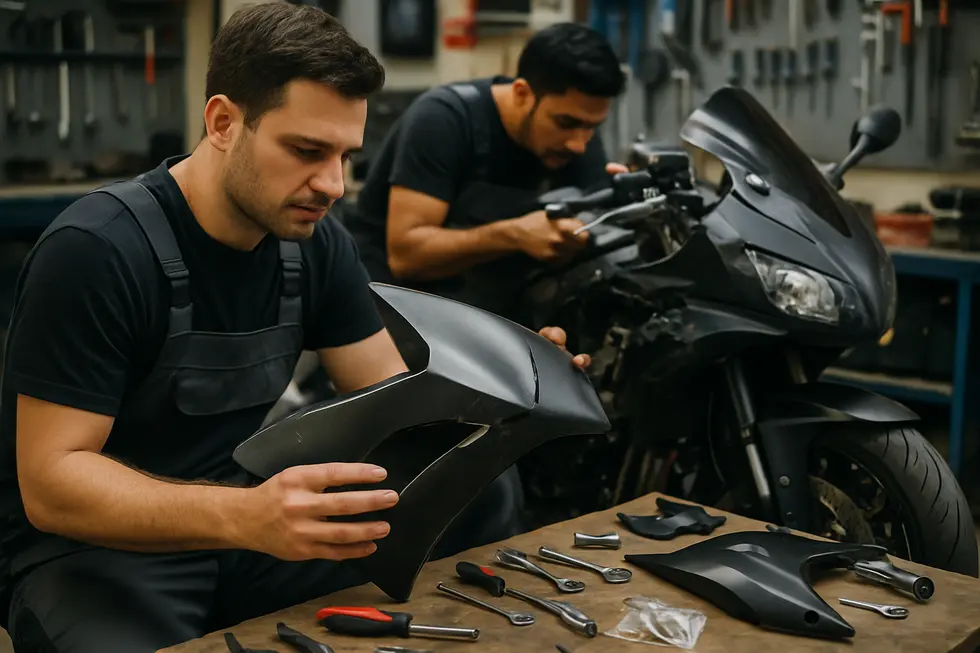
1. Effective Care and Upkeep Strategies for Motorcycle Fairings: Balancing Durability, Performance, and Value
Maintaining and cleaning motorcycle fairings is vital to preserving their aerodynamic efficiency, visual appeal, and economic worth. Employing careful cleaning techniques helps avoid costly surface damage while prolonging the fairing’s lifespan. For instance, applying a hot towel softens stubborn bug residue, allowing it to be removed gently without scratching the clear coat. Alongside this, washing with mild detergents and using soft cloths or brushes effectively removes dirt and grime, protecting delicate paint finishes as well as components like spoke rims, which require tailored cleaning to prevent corrosion and maintain their luster.
Regular inspection is equally important, as early detection of cracks or abrasions prevents aerodynamic degradation and safety risks. Neglecting minor damage can lead to accelerated deterioration and more expensive repairs or full component replacement. Adhering to manufacturer maintenance schedules supports not only engine and mechanical health but also helps ensure the fairing remains aligned and intact, preserving the motorcycle’s overall structural integrity.
Economically, well-maintained fairings retain a motorcycle’s resale value by safeguarding both appearance and function. Aerodynamically sound bodywork contributes to improved fuel efficiency through reduced drag, directly lowering operating costs over time. Preventative upkeep reduces repair frequency and extent, easing financial burdens associated with replacements or intensive fixes. Thus, investing time and care into routine cleaning and inspection translates to significant long-term savings and enhanced riding experience.
This integrated approach to maintenance balances aesthetic care with functional preservation, ensuring fairings continue to deliver performance and protection benefits. For further insights on optimizing motorcycle components, explore detailed resources like Explore the Best Motorcycle Fairings at Summit Fairings.
More cleaning tips and methods can be found in guides such as the TikTok tutorial on fairing cleaning by @jeanabean12: https://www.tiktok.com/@jeanabean12/video/7528807444701596959
2. Effective Repair Strategies and Cost Implications for Motorcycle Fairings
Maintaining the integrity and appearance of motorcycle fairings requires a thorough understanding of repair techniques and their associated costs. Repairing fairings often begins with cleaning and sanding the damaged areas to prepare the surface for restoration. Minor cracks or scratches are typically treated with plastic fillers or epoxy compounds, followed by repainting or applying vinyl wraps. Vinyl wrapping presents a cost-effective alternative to full repainting, offering surface protection and a sleek finish that can prolong the fairing’s lifespan. More severe damage, particularly involving cracks or bends in the motorcycle’s frame, demands professional welding or frame straightening, emphasizing the importance of expert handling given the safety-critical nature of these repairs. Regular maintenance is equally crucial; consistent cleaning prevents dirt buildup, while frequent inspections identify loose fasteners or cracks early, mitigating more costly future repairs. Shielding fairings from UV exposure also extends their durability, preserving both function and aesthetics. Economically, minor cosmetic fixes typically incur low to moderate costs, whereas structural repairs involving the frame can be financially substantial due to labor intensity and specialized skills required. Routine upkeep, such as tightening mounts and cleaning surfaces, imposes minimal expense but yields significant long-term savings by reducing major repair needs. Beyond repair costs, well-preserved fairings contribute to maintaining aerodynamic efficiency, which slightly improves fuel economy by minimizing drag from damaged or loose panels. Additionally, a well-maintained exterior enhances the motorcycle’s resale value by preserving its visual appeal. Understanding these factors allows motorcycle owners to strategically manage fairing maintenance, balancing repair approaches and expenses while safeguarding performance and investment. For those seeking comprehensive options in motorcycle fairings and their upkeep, exploring a trusted source for affordable and reliable parts can be highly beneficial (explore affordable motorcycle fairings). For a detailed guide on structural repairs, including frame welding and crack repair procedures, consult relevant technical resources addressing safety and longevity protocols.
3. Balancing Cost and Performance: The Economic Impact of Motorcycle Fairing Maintenance and Replacement
The economic decisions surrounding motorcycle fairing maintenance and replacement significantly affect both short-term expenses and long-term savings. Fairings are engineered primarily to optimize aerodynamics, which directly improves fuel efficiency and reduces engine strain during high-speed riding. This aerodynamic advantage translates to tangible cost savings over time, as smoother airflow decreases fuel consumption and can extend engine lifespan. However, these benefits must be weighed against the often considerable costs linked to repairing or replacing damaged fairings. Materials like fiberglass, plastic, or carbon fiber vary widely in price and durability, influencing overall maintenance expenses. Damage from road debris, minor collisions, or weather exposure can necessitate repairs that often exceed initial expectations, especially for complex designs integral to performance motorcycles.
Neglecting fairing upkeep not only diminishes aerodynamic efficiency but also increases operational costs by worsening fuel economy and rider fatigue due to increased wind resistance. Moreover, visible damage can lower resale value and potentially lead to higher insurance premiums because impaired fairings may raise the risk profile of the motorcycle. Therefore, timely maintenance and replacement represent prudent investments to preserve both the aesthetic and functional integrity of the bike.
Beyond economics, fairings enhance rider comfort and safety by shielding against wind and debris, indirectly reducing accident likelihood and related expenses. Maintaining a fairing in good condition supports these protective functions, reinforcing value beyond mere appearance.
Ultimately, while upfront costs for fairing maintenance and replacement may feel steep, their role in maintaining aerodynamic efficiency, rider security, and resale value justifies these expenditures. Motorcycle owners benefit economically in the long run by investing in quality upkeep and timely part renewal, underscoring the fairing’s integral role in the holistic cost management of motorcycle ownership.
For insights on diverse fairing options that balance style, functionality, and affordability, see affordable motorcycle fairings.
Reference: Motorcycle aerodynamics and fuel economy studies illustrating the cost-benefit balance of fairing maintenance.
4. How Material Properties Shape Maintenance and Repair Costs in Motorcycle Fairings
Material properties of motorcycle fairings play a pivotal role in determining maintenance needs, repair approaches, and overall economic impact. Among the most advanced materials, carbon fiber composites stand out for their exceptional strength-to-weight ratio and resistance to corrosion and heat. These characteristics translate directly into enhanced aerodynamic performance and durability, which reduce the frequency of maintenance cycles compared to traditional materials like fiberglass or plastic. Carbon fiber’s ability to withstand thermal stress up to around 250°C ensures stability under harsh riding conditions, further supporting long-term reliability.
When addressing repairs, however, the composite nature of carbon fiber introduces complexity and higher costs. Damage to carbon fiber fairings often requires skilled specialists and specific repair methods, involving layered resin and fabric replacement rather than simple patchwork. In contrast, conventional materials such as fiberglass or thermoplastics may be fixed with more accessible and cost-effective techniques, though they tend to wear faster or degrade under weather and vibration stress. This balance makes carbon fiber an investment that favors riders prioritizing performance and longevity, but it demands readiness for potentially expensive repairs if accidents occur.
Another important factor is the supporting structure—fairing stays—usually made from steel or aluminum. These metals must combine lightness with rigidity to maintain fairing stability against wind pressure and vibrations, directly influencing both rider comfort and safety. Their maintenance is comparatively straightforward but critical to preserve overall fairing integrity.
Economically, the higher initial price of premium materials like carbon fiber is offset by improved fuel efficiency due to reduced drag and longer service life. Riders seeking customization appreciate the versatility offered by advanced composites, which can elevate both the aesthetic and functional value of the motorcycle.
For those interested in exploring a variety of fairing options that balance style and maintenance considerations, resources such as Summit Fairings’ collection provide comprehensive insights.
More details on how these properties influence maintenance and economic outcomes can be found in specialized studies like those from Composites Science and Technology [1].
5. How Fairing Upkeep Enhances Performance and Minimizes Long-Term Repair Costs
The maintenance of a motorcycle fairing plays a critical role in preserving the bike’s aerodynamic efficiency, rider safety, and overall economic value. Fairings, by design, reduce drag and shield essential components and the rider from wind, debris, and weather elements. When these protective shells are well-maintained, they sustain optimal airflow, directly contributing to better stability and fuel efficiency, especially at higher speeds. Neglecting regular upkeep, such as leaving cracks unrepaired or allowing mounting hardware to loosen, not only leads to increased vibration and airflow disruption but also compromises structural integrity and rider comfort.
From an economic standpoint, consistent maintenance helps avoid costly repairs that arise when damaged fairings expose delicate engine parts or the frame to harm. Faded or broken fairings decrease the motorcycle’s market value, deterring potential buyers, while clean, intact fairings boost resale appeal. Investing in quality repair materials and proper fitting—like using sturdy fairing stays—supports durability and simplifies future servicing. This preventive care reduces the frequency of comprehensive replacements, thus lowering long-term expenses.
Ultimately, disciplined fairing care sustains both the machine’s peak performance and its financial worth. Riders who prioritize this maintenance experience improved handling and reduced aerodynamic drag, alongside enhanced protection against environmental hazards. Such attention to detail leads to fewer unexpected repairs and preserves the motorcycle’s aesthetic and functional integrity over time. For those interested in exploring a diverse selection of quality fairings to support maintenance and upgrades, resources such as this collection of affordable motorcycle fairings provide valuable options to consider.
External resource: https://www.kingsmotorcyclefairings.com/blogs/news
Final thoughts
Motorcycle fairings represent a multifaceted asset that enhances aerodynamic efficiency, rider protection, and overall machine performance. For business owners and stakeholders in the motorcycle industry, a comprehensive grasp of their design principles, various types, and maintenance ramifications is essential. By integrating this knowledge, businesses can better serve diverse rider needs, optimize inventory and service offerings, and boost profitability. Fairings not only elevate motorcycle aesthetics and function but also present strategic opportunities to deepen customer engagement and competitive advantage in a crowded marketplace.
Ready to elevate your ride? Summit Fairings delivers premium, custom-fit fairings that blend style and durability. Whether you’re chasing speed or turning heads, we’ve got your bike covered. Don’t wait—transform your machine today. Click, customize, and ride with confidence. Your perfect fairing is just a few clicks away. Act now!
About us
We are one of the leading motorcycle fairing export sites, featuring over 3,000 styles spanning nearly all motorcycle models. Shop with summitfairings.com and save 10-40% compared to other sites. Have questions? We guarantee a response within six hours to provide expert support.
RELATED POSTS
View all

